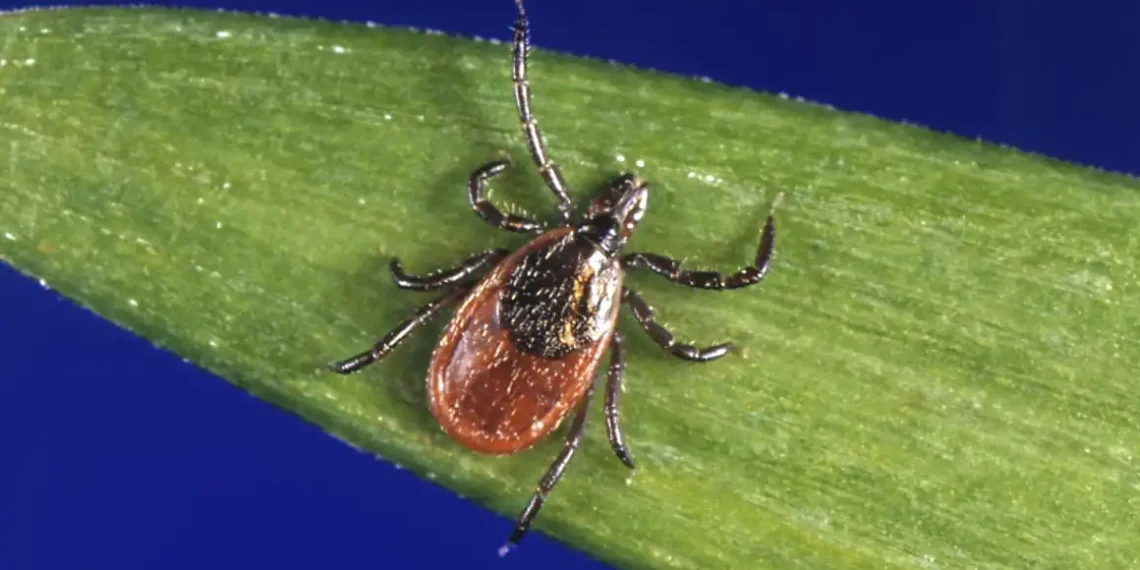How to Protect Yourself from Ticks Year-Round: Prevention Tips, Risks, and What to Do After a Bite
Ticks aren’t just a summer problem. Here’s how to stay safe from these disease-carrying pests in every season.
Ticks Are Active Year-Round—Not Just in Summer
While people often associate ticks with summer hikes and camping trips, experts warn that tick exposure is a year-round risk—even in winter.
“Every season is tick season,” says Sam Telford, an infectious disease specialist at Tufts University. “We just hear more about infections in the summer because people are outdoors more often.”
Recent data suggests tick activity is already surging in parts of the Northeast. American dog ticks are showing up in above-average numbers in states like Maine, Massachusetts, and Rhode Island. And in New York, reports of deer tick bites are up compared to last year, according to Saravanan Thangamani of SUNY Upstate Medical University.
How Ticks Transmit Disease
Ticks, like mosquitoes, feed on blood. But unlike quick-biting bugs, ticks are slow, stealthy feeders. They burrow their hooked mouthparts into skin and may stay attached for hours or even days if unnoticed.
Not all ticks carry disease, but some species are known to transmit dangerous illnesses. Chief among them is the blacklegged tick (commonly called the deer tick), which spreads Lyme disease—a serious bacterial infection. These ticks were once limited to New England and parts of the Midwest, but have now expanded their range nationwide.
Fortunately, prompt action reduces risk. “If you remove a tick within 24 hours of attachment, it’s fairly unlikely that you’ll get infected,” Telford explains.
How to Check Yourself (and Others) for Ticks
Ticks are often found in grassy fields, wooded trails, and piles of leaf litter, especially close to the ground. After spending time outdoors, it’s critical to do a full-body tick check:
-
Examine clothing, arms, legs, and hairline.
-
Use a mirror to check behind your knees, ears, and under your arms.
-
Showering right after coming indoors can wash off unattached ticks and make it easier to spot others.
“Try to do a quick check every few hours if you’re outside all day,” advises Dr. Bobbi Pritt of the Mayo Clinic.
If you find a tick, remove it immediately. Use fine-tipped tweezers to grasp the tick as close to the skin’s surface as possible and pull straight out. If you don’t have tweezers, a credit card edge or even fingernails can work in a pinch.
How to Prevent Tick Bites
The most effective protection strategy is to avoid exposure in the first place. Here’s how:
-
Use EPA-approved insect repellents that contain DEET or picaridin.
-
Spray clothing and gear with permethrin, a repellent that mimics compounds found in chrysanthemums and repels ticks on contact.
-
Wear long sleeves, pants, and light-colored clothing to spot ticks more easily.
Avoid tall grasses and bushy areas when possible, and stick to the center of trails when hiking.
Don’t Forget Your Pets
Dogs and cats that spend time outdoors can carry ticks into your home. That’s why regular tick checks and prevention meds are crucial.
“Wherever pets can’t easily groom themselves, that’s where the ticks will be,” Thangamani warns—especially areas like behind the ears, around the muzzle, under collars, and between the toes.
Even indoor pets can become hosts if ticks find a way inside. A single tick that hitches a ride indoors can survive for months while waiting for its next blood meal—from a person or another pet.
After a Tick Bite: Monitor and Act
If you’ve been bitten, removing the tick promptly is key. But don’t stop there—watch for symptoms in the days and weeks that follow.
Seek medical attention if you develop:
-
A bullseye-shaped rash
-
Fever
-
Headache
-
Fatigue
-
Muscle or joint pain
These could be signs of Lyme disease or another tick-borne illness.
While some private labs offer tick testing, the Centers for Disease Control and Prevention (CDC) does not recommend it due to unreliable results. Instead, consult a healthcare provider if symptoms appear.
The Bottom Line
Ticks are more than a nuisance—they can carry serious, sometimes life-altering diseases. But by taking proactive steps to prevent bites, check your body, and act quickly after exposure, you can protect yourself and your family no matter the season.
This article was rewritten by JournosNews.com based on verified reporting from trusted sources. The content has been independently reviewed, fact-checked, and edited for accuracy, neutrality, tone, and global readability in accordance with Google News and AdSense standards.
All opinions, quotes, or statements from contributors, experts, or sourced organizations do not necessarily reflect the views of JournosNews.com. JournosNews.com maintains full editorial independence from any external funders, sponsors, or organizations.
Stay informed with JournosNews.com — your trusted source for verified global reporting and in-depth analysis. Follow us on Google News, BlueSky, and X for real-time updates.














